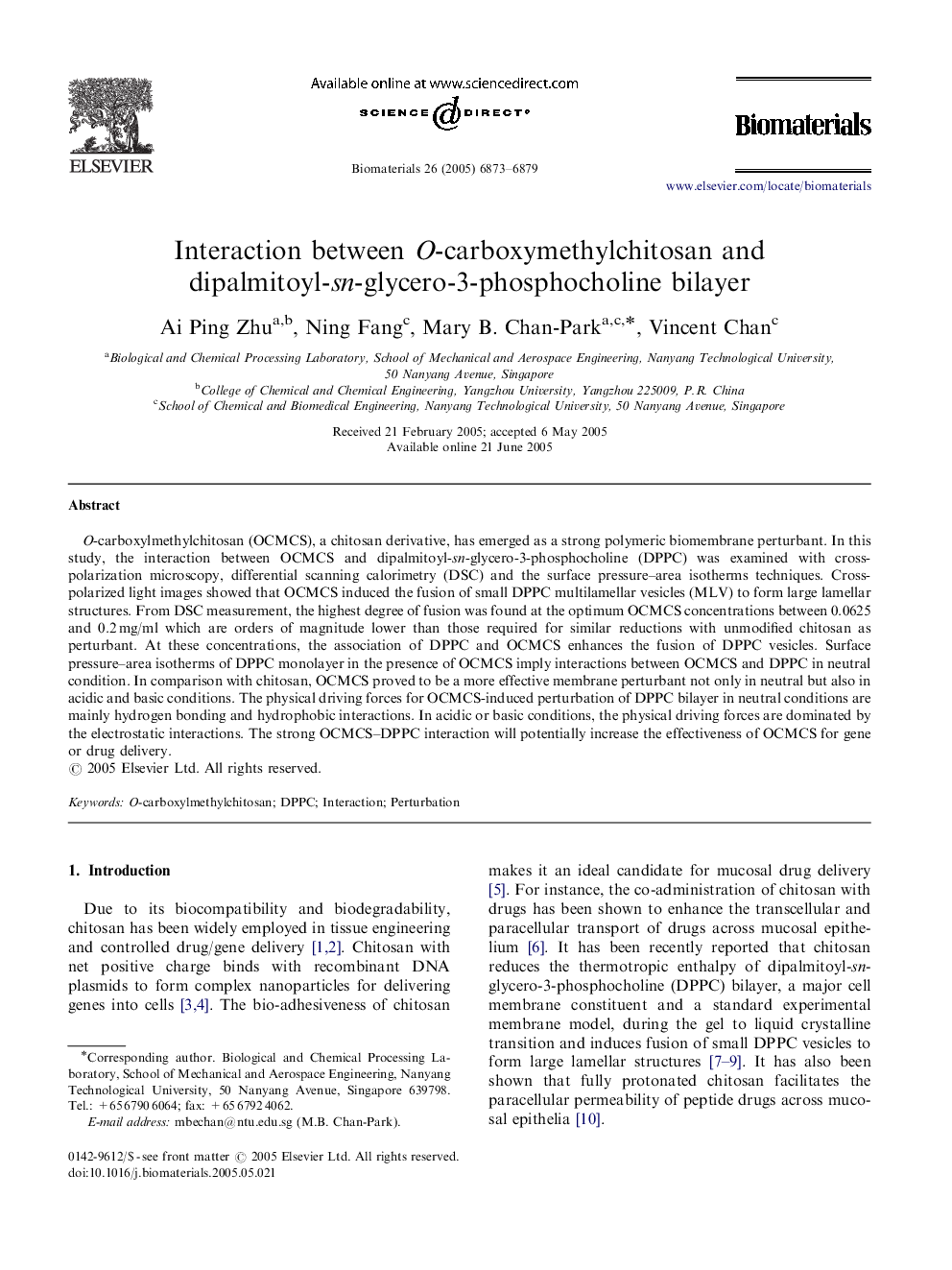| Article ID | Journal | Published Year | Pages | File Type |
|---|---|---|---|---|
| 12444 | Biomaterials | 2005 | 7 Pages |
O-carboxylmethylchitosan (OCMCS), a chitosan derivative, has emerged as a strong polymeric biomembrane perturbant. In this study, the interaction between OCMCS and dipalmitoyl-sn-glycero-3-phosphocholine (DPPC) was examined with cross-polarization microscopy, differential scanning calorimetry (DSC) and the surface pressure–area isotherms techniques. Cross-polarized light images showed that OCMCS induced the fusion of small DPPC multilamellar vesicles (MLV) to form large lamellar structures. From DSC measurement, the highest degree of fusion was found at the optimum OCMCS concentrations between 0.0625 and 0.2 mg/ml which are orders of magnitude lower than those required for similar reductions with unmodified chitosan as perturbant. At these concentrations, the association of DPPC and OCMCS enhances the fusion of DPPC vesicles. Surface pressure–area isotherms of DPPC monolayer in the presence of OCMCS imply interactions between OCMCS and DPPC in neutral condition. In comparison with chitosan, OCMCS proved to be a more effective membrane perturbant not only in neutral but also in acidic and basic conditions. The physical driving forces for OCMCS-induced perturbation of DPPC bilayer in neutral conditions are mainly hydrogen bonding and hydrophobic interactions. In acidic or basic conditions, the physical driving forces are dominated by the electrostatic interactions. The strong OCMCS–DPPC interaction will potentially increase the effectiveness of OCMCS for gene or drug delivery.
